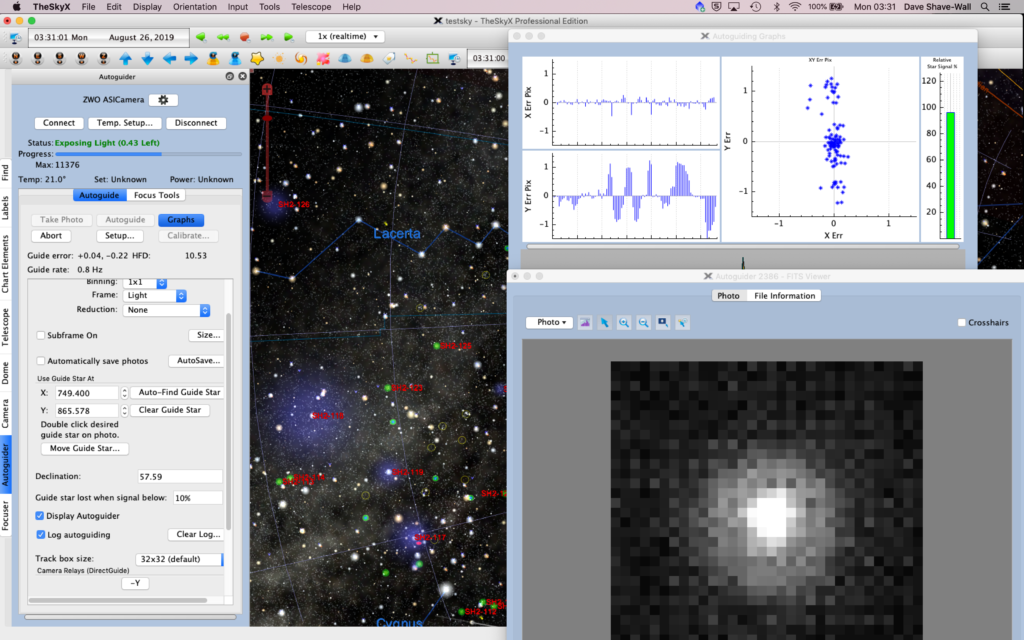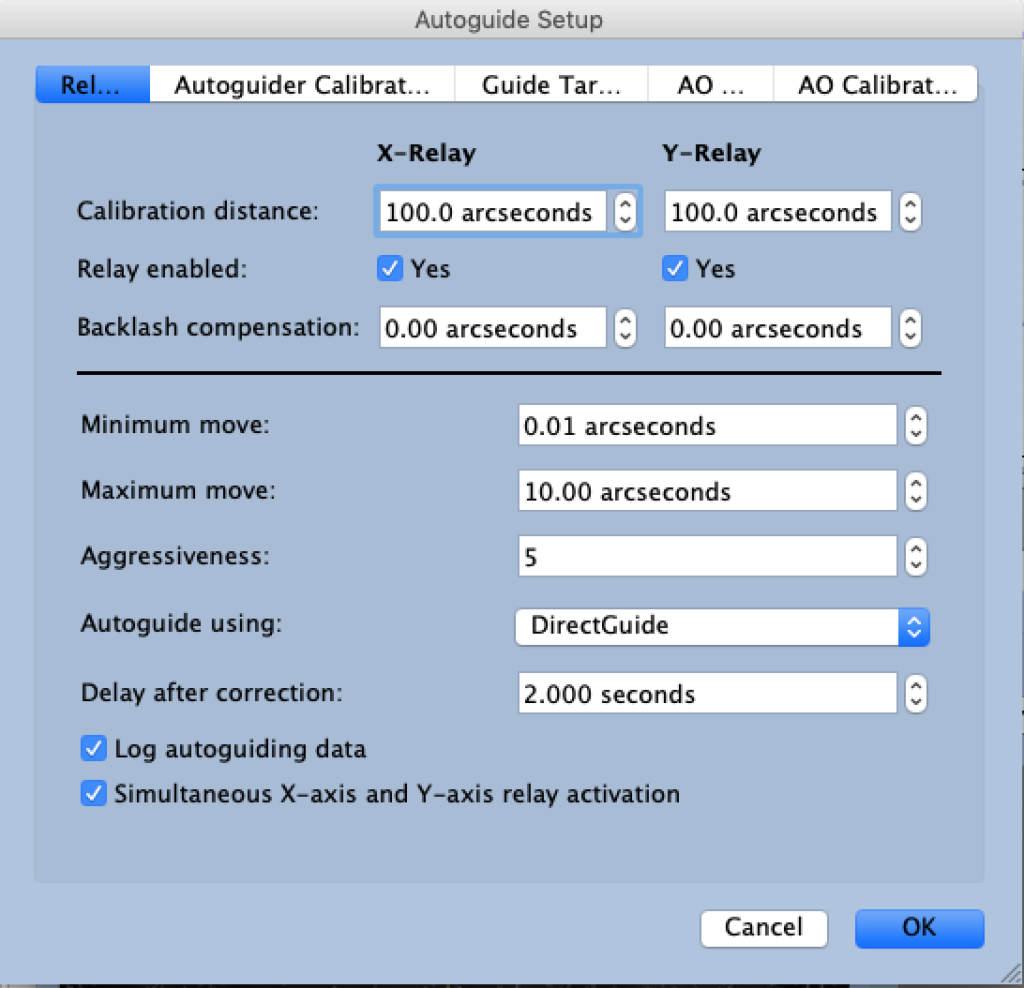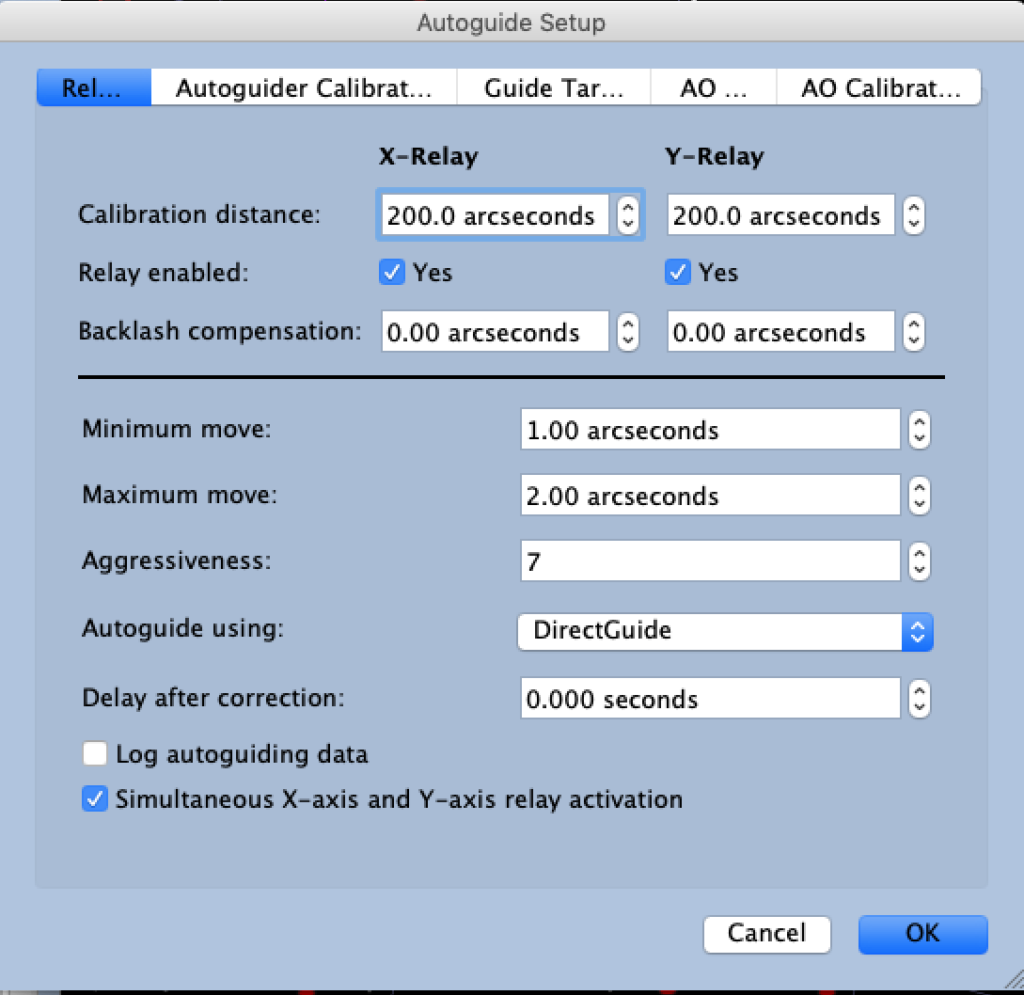Viewing time period – 22:34 – 04:12
After a full day of all three geeks making more changes to the observatory, I setup my travel scope, Esprit 120 to get some more time logged before taking it on any serious holiday.
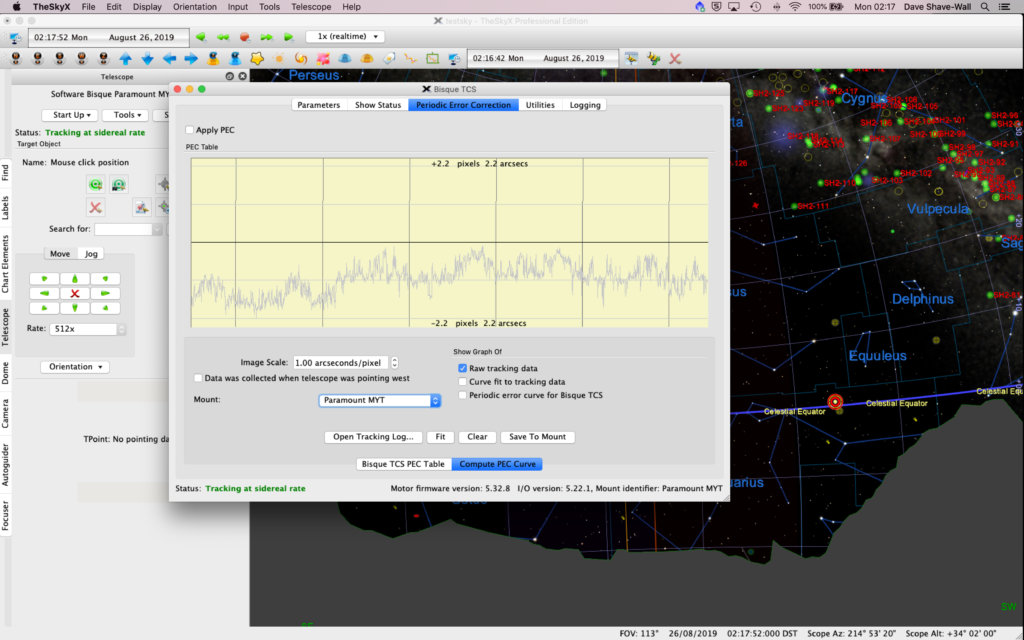
Before starting I thought I would record, compute and apply a Periodic Error Correction (PEC) model to the MyT mount similar to doing the one on the MEII earlier. Recording it was fairly straightforward using TheSkyX (TSX), connecting to my camera and then continuously recording the output to a log which you then read in and apply. Even though the log looked pretty terrible a periodic curve was able to be computed and looked a good fit and represented a peak to peak error of +/- 0.5 arcsecs.
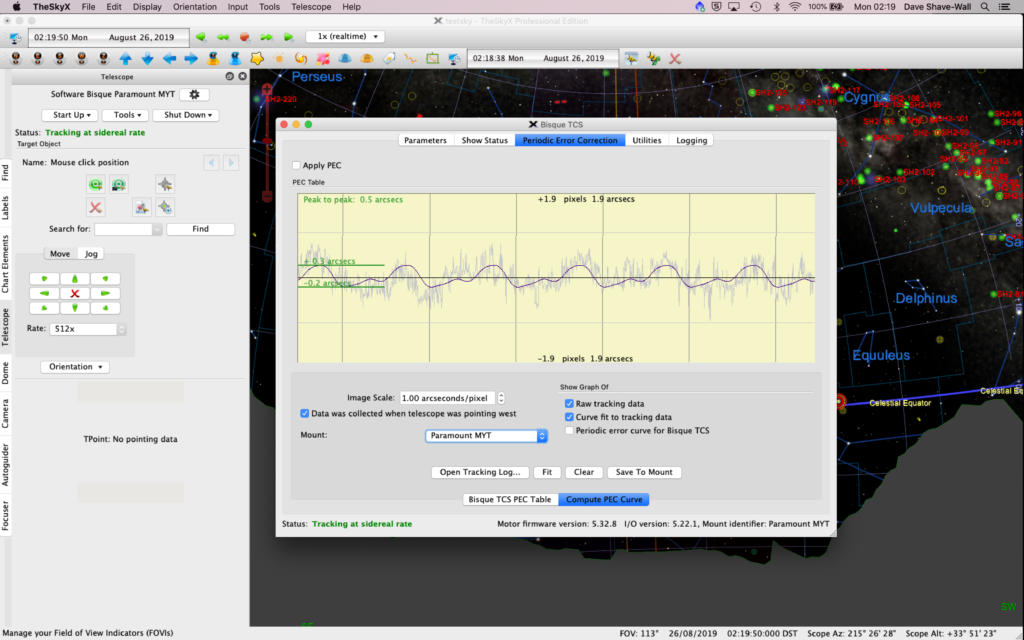
Connecting the camera to PHD2 though was somewhat of a challenge, I managed to guide in DEC but the RA was wildly out even though I tried a few different settings for the aggressiveness and Hysteresis which is the previous adjustment percentage to apply as well.
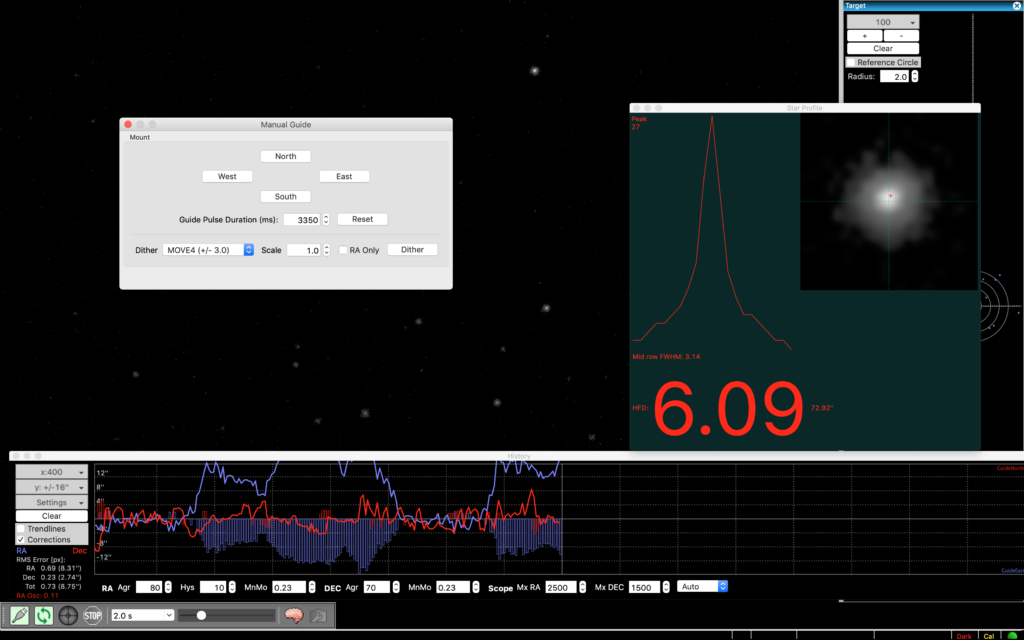
When trying to image with this sort of guide graph from PHD2 the resulting image is trailed. Note the greenness of the image is due to the bayer matrix array of the camera being RGGB and thus 50% of the light is in the green and would be corrected later. The picture below is a zoomed in portion of that image.
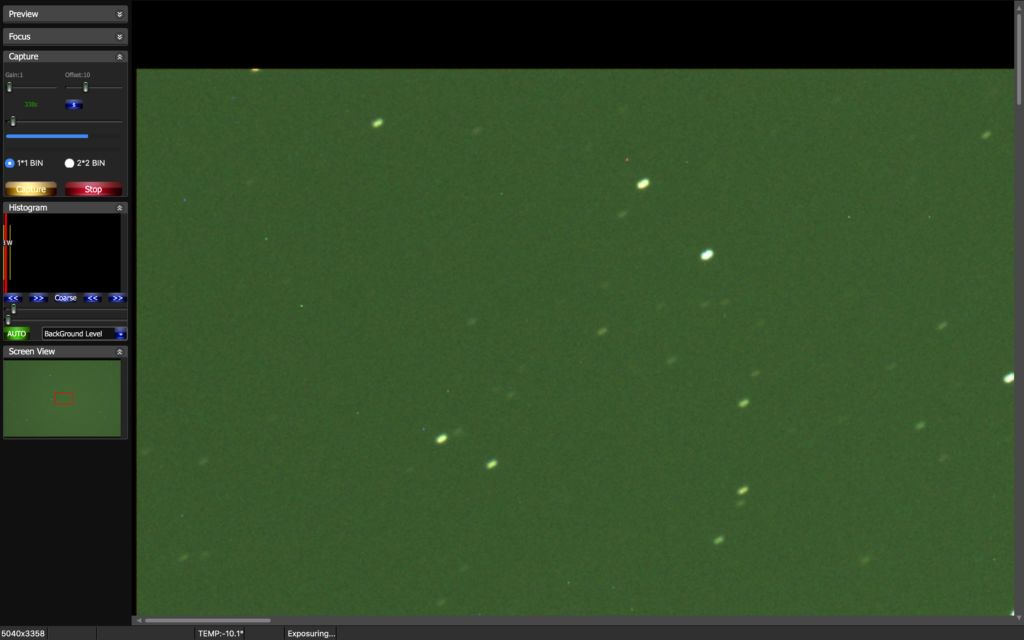
So instead I moved to TSX to see if it would guide any better, knowing full well that PHD2 should be able to do this if I could get the right settings. In TSX I took the default values and then choose a guide star and started guiding. The output is fairly similar to PHD2 in the graph and immediately the RA error again could be seen and the resulting trailing of the image taken with EZCAP on the Mac apparent.
At this point I changed the settings for the guiding in TSX noting that the calibration was really quick, almost too quick, with a single move of the scope in either axis which is not enough. So I changed the calibration distance for both axis from 100 pixels to 200 pixels, I also changed the Minimum and Maximum move figures from 0.01 arcsecs and 10 arcsecs to 1 and 2 arcsecs respectively. Finally I added a delay after correct of 2 seconds.
I then started guiding again to look at the results. The new set of data was promising with the RA axis having a lot less correction needed and the scatter graph (to the right) being a tighter set of points which is good and requiring less correction.
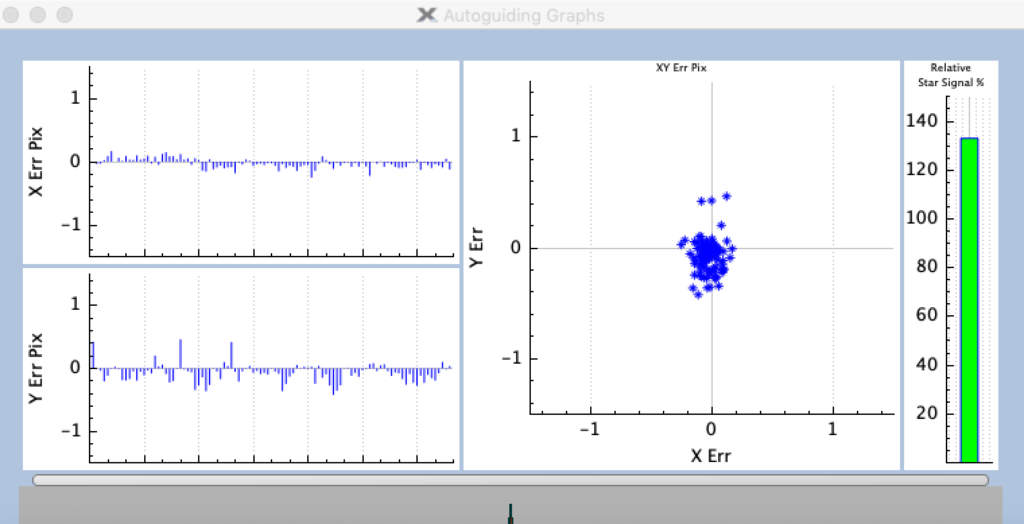
Well that was enough tonight and I was pleased with a bit more work being completed on the scope so as the clouds rolled in I packed up and went to bed.

